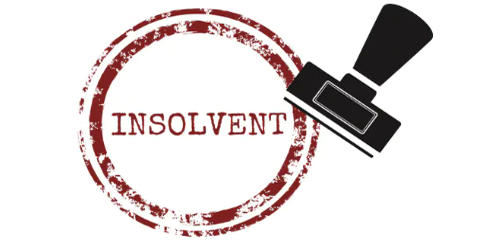Insolvent
An insolvent is a person whose debt far exceeds the value of his property and who commits an act of insolvency. It means unable to pay debts owed. It also means unable to pay debts as they fall due in the usual course of business. Insolvent liquidation occurs when a company cannot carry on for financial reasons.
A person or organization that is insolvent does not have enough money to pay their debts. Insolvency is a term for when an individual or organization can no longer meet its financial obligations to its lenders as debts become due. When a company goes into liquidation its assets are sold to repay creditors, the business closes down, and its name is removed from the register at Companies House. Before an insolvent company or person gets involved in insolvency proceedings, it will likely be involved in informal arrangements with creditors, such as setting up alternative payment arrangements. The overall aim of an insolvent liquidation process is to provide a dividend for all classes of creditors, but it is often the case that unsecured creditors receive little, if any, return. Insolvency can arise from poor cash management, a reduction in cash inflow, or an increase in expenses.
Insolvency is a term used for both companies and individuals. If a company or individual is unable to pay its debts, this situation is known as insolvency. In practice, this usually means that bills cannot be paid when they become due – but insolvency also applies to the state of having more liabilities than assets. As an individual, it’s more popularly known as Bankruptcy, but for a company, it’s known as Corporate Insolvency. The term “insolvency” refers to both the situation of being insolvent and the procedures of dealing with insolvency.
There are two tests to determine whether your company is insolvent:
- The cash-flow test: is your company’s current debts, or future debts, unable to be paid as they fall due?
- The balance sheet test: is the value of your company’s assets less than the number of its liabilities, taking into account the present uncertain circumstances and future liabilities?
















